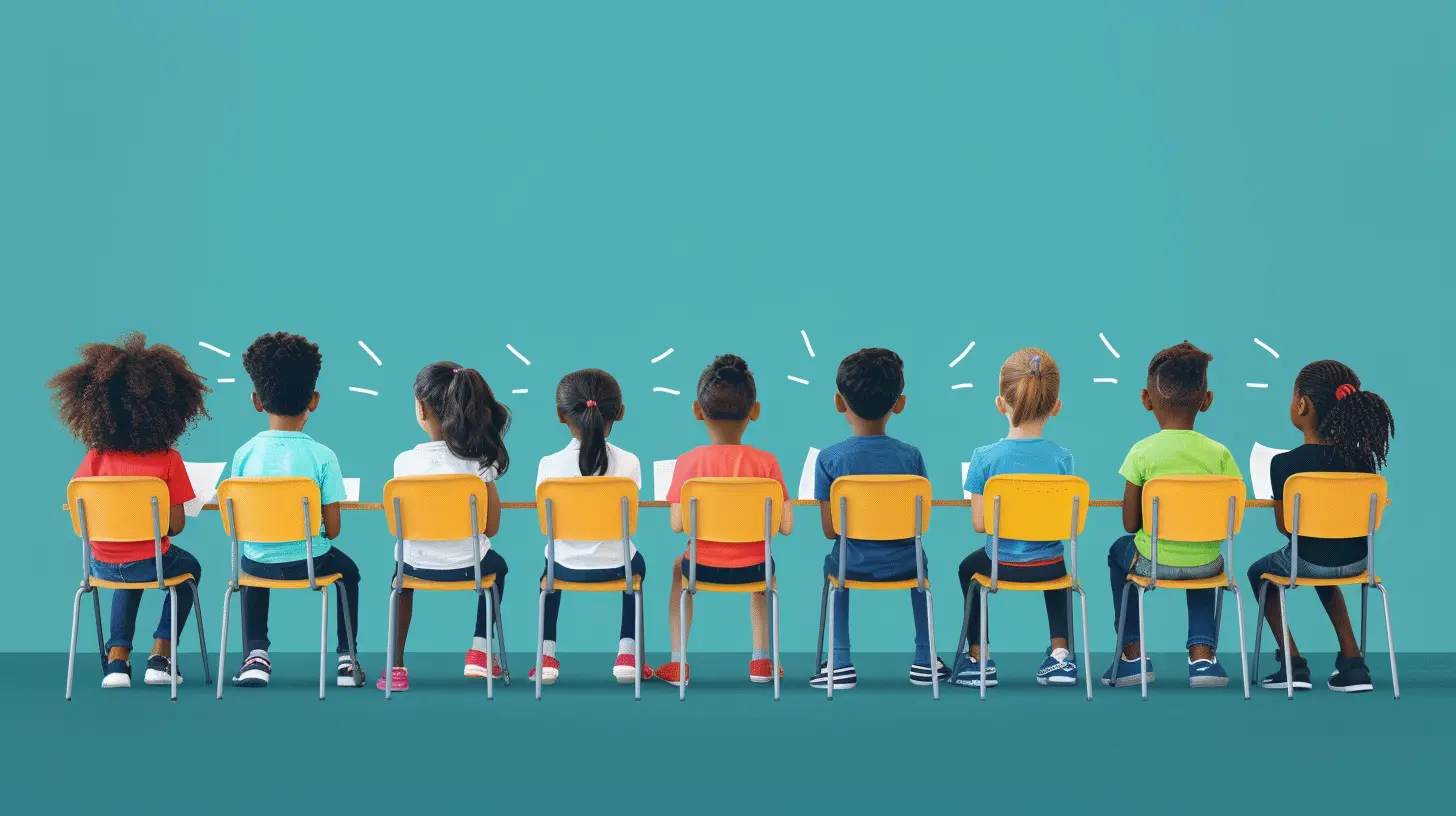Conducting Research in Diverse and Inclusive Classrooms
3 August 2025
When we talk about education in today’s world, one thing is clear: diversity isn’t just a buzzword—it's the backbone of a thriving and dynamic classroom. Students walk into schools carrying not only their backpacks but also unique stories — shaped by culture, language, abilities, gender, socioeconomic status, and much more. Want to truly make a difference in education? Then it's time to rethink how we conduct research in these beautifully diverse and inclusive classrooms.
In this article, we’re diving into the importance, challenges, and best practices for conducting meaningful, respectful, and impactful research in an environment where every learner matters. So, grab a cup of coffee, lean in, and let’s get real about what it takes to do research that actually reflects the vibrant world we live in.
Why Diversity and Inclusion Matter in Research
Let’s kick things off with a question: What’s the point of conducting research if it doesn’t reflect the reality of the classroom?Classrooms today are microcosms of our broader society. They’re filled with multicultural perspectives, different ability levels, and a wide spectrum of learning needs. When research ignores this, it risks becoming irrelevant—or worse—harmful. On the other hand, when we respect and center diversity, we’re not just gathering data; we’re amplifying voices, challenging biases, and sparking real change.
Inclusive research creates a mirror in which every student can see themselves. It isn’t about ticking boxes—it’s about asking the right questions, to the right people, in the right way.
The Human Side of Research: It’s All About Relationships
Want meaningful data? Start with meaningful connections.You can’t walk into a diverse classroom with a clipboard and expect students to open up. Kids, especially those from marginalized backgrounds, are used to being studied rather than heard. That’s why building trust is non-negotiable.
Talk to the students. Chat with the teachers. Listen more than you speak. Show up as a real person, not just a researcher. When people feel seen, they respond with authenticity—and that’s where the real magic happens.
Planning Your Research With Inclusion in Mind
Here’s the deal: if your research plan doesn’t consider diversity and accessibility from day one, you’re already off track.Let’s break it down:
1. Define Your Purpose Clearly
Why are you doing this research? Who benefits from it? If the answer doesn't include the students and teachers involved, it’s time to go back to the drawing board.2. Choose Culturally Responsive Methods
What works for one group might not work for another. Interviews? Observations? Surveys? Think about language barriers, cultural norms, and differing comfort levels.3. Adapt for Accessibility
Got students with disabilities? Make sure your tools are inclusive. Use large fonts, audio options, visuals—whatever it takes to ensure everyone can participate.
Addressing Bias: Yours and Theirs
We all have biases. Yep, even those of us who mean well.One of the hardest parts of inclusive research is recognizing our own blind spots. You might assume certain behaviors mean a student is disengaged, when really, they're just processing information differently.
So, how do you fight bias?
- Reflect regularly: Keep a journal. Ask yourself tough questions.
- Stay curious: Don’t jump to conclusions. Ask why.
- Diversify your team: More perspectives = more checks on assumptions.
Remember, bias isn’t the enemy. Unexamined bias is.
Real Talk: Challenges You Might Face (And How to Handle Them)
Let’s keep it real. Conducting research in diverse classrooms isn’t a walk in the park. But the bumps in the road? They’re worth navigating.Challenge 1: Language Barriers
Not every student speaks English fluently. Instead of seeing this as a limitation, turn it into a strength! Offer surveys in multiple languages, use visuals, and collaborate with bilingual educators.Challenge 2: Cultural Misunderstandings
Different cultures have different attitudes toward authority, education, even eye contact. Do your homework. Better yet, ask community members for guidance.Challenge 3: Gaining Trust
You might be met with skepticism—especially in communities that have been historically marginalized. Earn trust by being consistent, transparent, and respectful. Show up. Keep your promises.Involving Students as Co-Researchers
Here’s a radical idea: what if students weren’t just participants—but partners?When you include students in the research process, you shift the power dynamic. Ask for their input on your questions. Let them help analyze data. Invite their interpretation of what’s going on.
It sounds bold, but think about it. Who understands the student experience better than students themselves?
Ethical Considerations: More Than Just Permission Slips
You’re not just collecting data; you’re handling real people’s experiences. Ethics in diverse classrooms aren’t just checkbox compliance—they’re about care, dignity, and fairness.- Informed consent should be truly informed. Use language that’s accessible.
- Confidentiality is especially crucial in small or tight-knit communities.
- Feedback matters. Share your findings with the community. Let them see how their stories contribute to the bigger picture.
Using Data to Drive Equity, Not Just Stats
Okay, so you’ve collected your data. Now what?First, look beyond the averages. Sometimes, overall results can mask inequalities. Dig deeper. Whose scores are improving? Who’s still being left behind?
Use your findings to advocate for resources, inform teaching practices, and—most importantly—push for systems that serve everyone, not just the majority.
Data is powerful. But it’s only as powerful as the change it inspires.
Examples of Inclusive Research Done Right
Let’s look at a few examples to show you what this can look like in action:- A group of researchers in a multilingual school used focus groups in students’ home languages to hear their real feelings about learning. Students felt heard. Teachers got deeper insight. Win-win.
- In a study involving neurodiverse students, researchers let students choose how they wanted to participate—via video, art, or written responses. The result? Richer data and happier participants.
- One project put students on the steering committee, helping design and review the study. Participation skyrocketed, and the findings led to concrete improvements in class policies.
It’s not about being “perfect.” It’s about being thoughtful, flexible, and human.
Tips to Keep Your Research Inclusive and Impactful
Let’s wrap up with a few power-packed tips to keep your research grounded in inclusion:✅ Start with empathy
✅ Ask instead of assume
✅ Center student voices
✅ Use mixed methods for a fuller picture
✅ Always put impact over ego
✅ Reflect, revise, and repeat
Remember: inclusive research isn’t a one-and-done. It’s a practice—a mindset. And every step you take matters.
Final Thoughts: You Have the Power to Make a Difference
If you’ve read this far, here’s what you need to hear: YOU have what it takes to be a changemaker.Conducting research in diverse and inclusive classrooms isn’t just an academic task—it’s a powerful act of justice, advocacy, and transformation. It’s a chance to shift narratives, challenge systems, and ensure that every child gets the education they deserve.
So go ahead. Ask the hard questions. Build the relationships. Embrace the discomfort. And above all, let your research be a celebration of every voice in the room.
Because in the end? The best classrooms—and the best research—don’t just include diversity. They thrive because of it.
all images in this post were generated using AI tools
Category:
Educational ResearchAuthor:

Madeleine Newton
Discussion
rate this article
1 comments
Lincoln Forbes
Research in diverse classrooms isn't just beneficial—it's essential. Embracing varied perspectives enriches education, fosters empathy, and prepares students for a multifaceted world. Let's prioritize inclusion.
August 12, 2025 at 4:28 AM

Madeleine Newton
Thank you for your insightful comment! I wholeheartedly agree that diverse perspectives are vital for enriching education and fostering empathy in our classrooms. Prioritizing inclusion is essential for preparing students for the complexities of the world.


